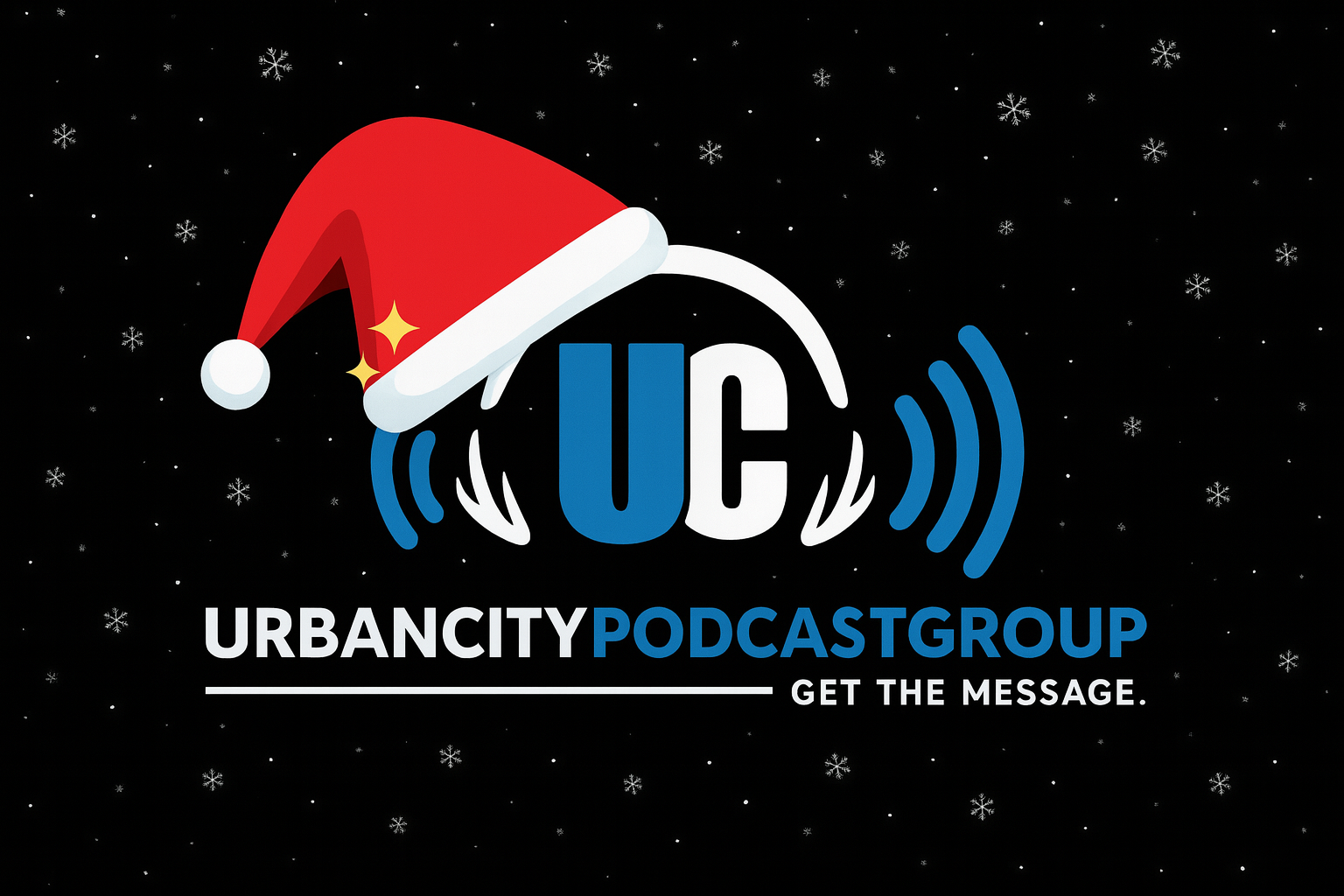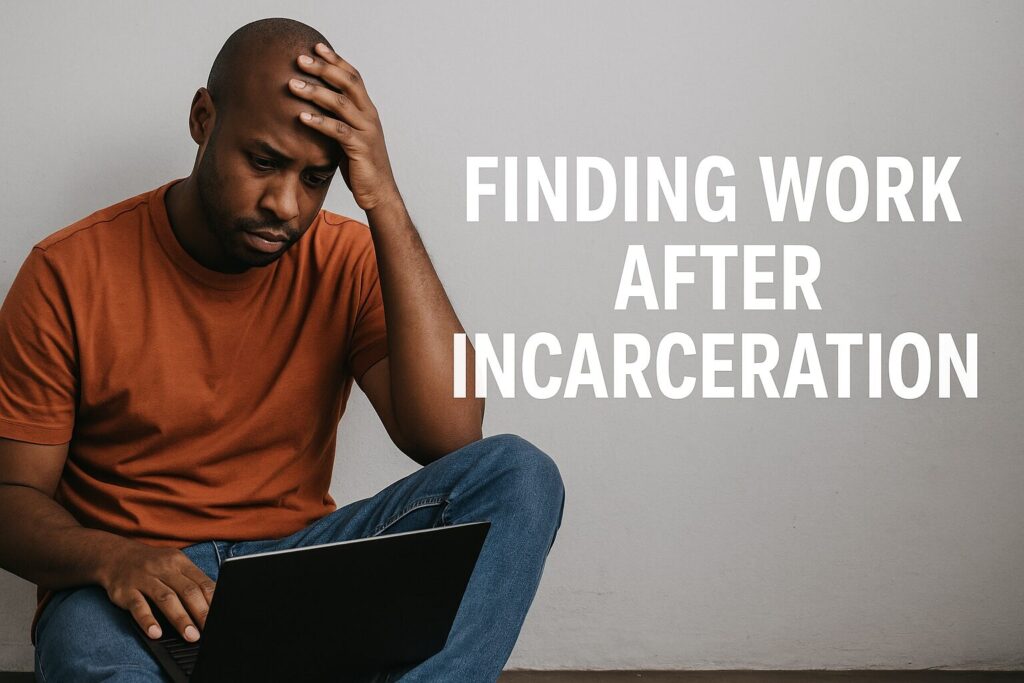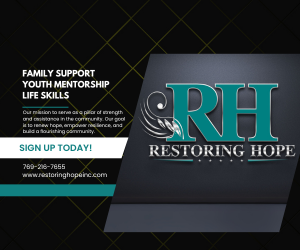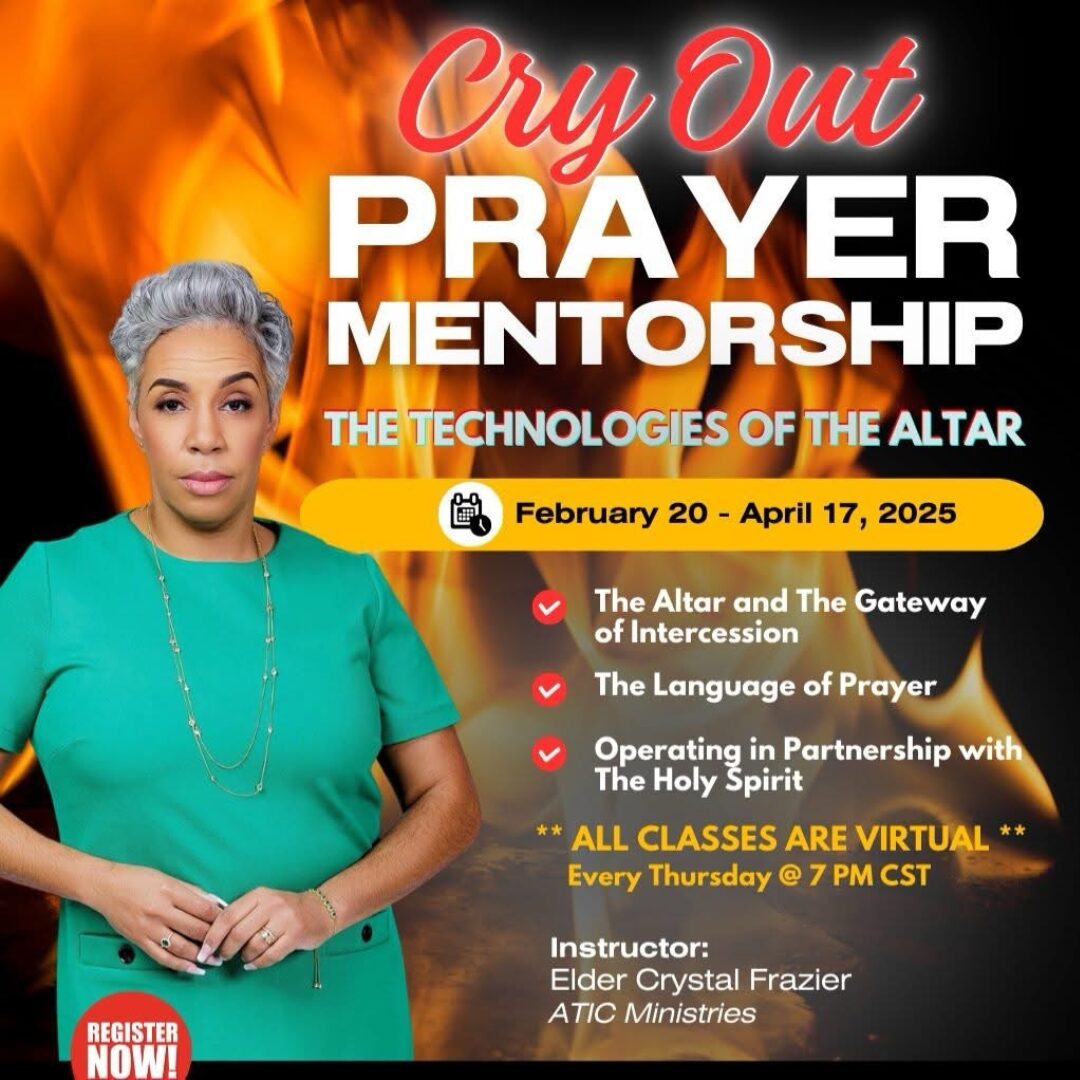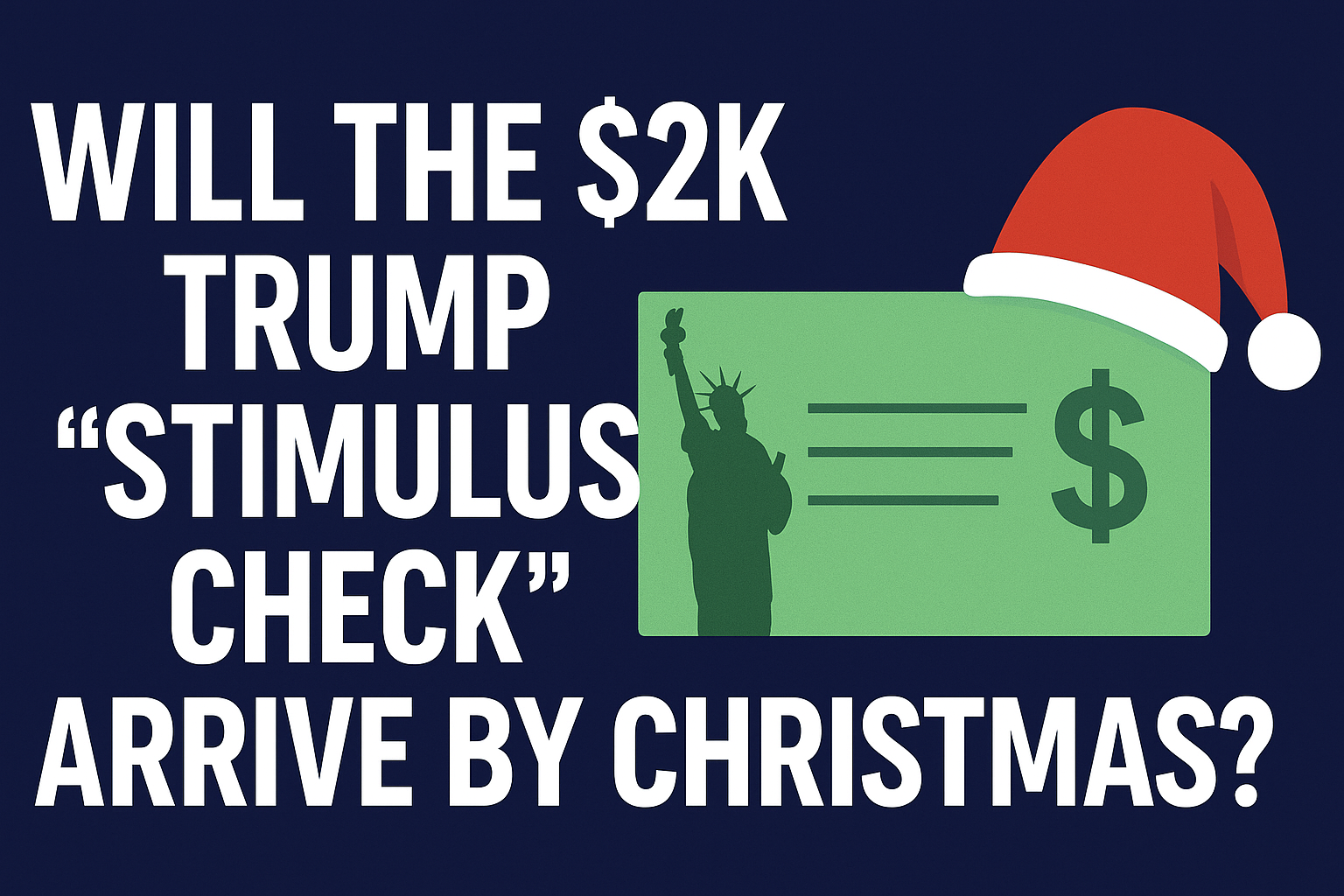This week on Viewpoints. There are 19 million Americans who have a felony conviction, a huge barrier to employment and full participation in society. The difficult task of starting over and finding work after serving time, then.
I was really thriving and really successful and at the top of my game, but I was starting more and more to feel anxious and a little out of control. Do you need a life coach? I’m Marty Peterson. And I’m Gary Price.
These stories in depth this week on your public affairs magazine, Viewpoints. Thanks for calling Discover. This is Nia.
Hi Nia, it’s Jennifer. Did you know that Discover automatically doubles all the cash back you’ve earned at the end of your first year? Yeah, I work here. Okay, I was just double checking.
Get it? Because Discover automatically doubles all the cash back you’ve earned at the end of your first year. Oh, you get me, Nia. You could say that I double get you.
I guess we’ve taken it too far. You earn, we match. Discover cash back match.
See terms at discover.com slash credit card. Sometimes I struggle to get to sleep. My body stopped for the day, but my mind is still running.
So I take ZQuill. ZQuill, the world’s number one sleep aid brand, has a range of non-habit forming products to fit you and your family’s needs. Invest in a great night’s sleep for the best you tomorrow.
I’m awake and ready to take on anything. Better days start with ZQuill Nights. Explore our products at zquill.com. Uses directed, keep out of reach of children.
Across the U.S. nearly 2 million people are behind bars in federal, state, and local prisons and jails. This is according to an early 2025 report by the Prison Policy Initiative, a non-profit organization focused on criminal justice reform and advocacy. Today, the U.S. still has the largest incarcerated population in the world.
With so many millions passing through this system, what is the future of the U.S.? What kind of life awaits on the other side? For many, securing a job, housing, and finding some stability can be a shockingly difficult process. On top of this, many people leave prison with some amount of unpaid debt as well. Court costs and fines and fees are charged to people at the time of their case and follow them around.
So in some states, there are deductions taken out of their already meager pay, both for restitution, but also to cover court fees and fines. And so your average prisoner leaves prison thousands, if not tens of thousands of dollars in debt. That’s Beth Schwartzapfel, a staff writer at The Marshall Project, a non-profit media outlet covering criminal justice issues.
You start out in this really big hole. That’s the first thing. And then you come out with a felony conviction, which makes it incredibly difficult to get a job.
Studies have shown that when you start with a felony conviction, and then you layer race on top of it, Black men with a felony conviction got the lowest callback rates of any group in a kind of seminal study of people who are applying for entry-level jobs. So the deck is really stacked against people. Without steady employment or access to education or training, it can be all too easy to slide back into incarceration.
In a study published in September 2021, the Bureau of Justice Statistics looked at rates of recidivism over a 10-year span between 2008 and 2018 across 24 states. Essentially, recidivism is when previously convicted criminals get re-arrested and re-enter the prison system. The report found that within three years, about two-thirds of former prisoners were arrested again.
Within 10 years, this number jumped to 82 percent. Schwartzapfel says that part of the problem is this. Prisons pay prison workers little or nothing for their work.
So it’s often prisoners who are doing the work of keeping the prison running, doing the laundry, mopping the floors, filing papers, mowing the lawn, pretty much anything that has to happen besides for security to keep the prison going, prisoners are doing. And yet they’re paid in a couple of states zero dollars and in most other states pennies on the hour. Hourly wage for a prisoner is between 14 and 63 cents an hour, according to prison policy initiative.
And the way that prisons sort of justify that is to say, well, it’s real world experience, right? They’re learning to work and they’ll be released with whatever it is they did at the prison on their resume. But what kind of future work is this setting them up for? There’s been a lot of talk around the importance of rehabilitation in prison. Well, one aspect of this is helping prisoners gain access to long term meaningful employment.
Set them up with job training in a field where there’s demand, right? And where there’s a clear path to get out and pursue that work. One advancement is the return of Pell grants for prisoners, which are a form of federal need-based financial aid. Eligible students can access aid and earn a degree through college and prison programs.
However, in some cases, even with an education or relevant work experience, a criminal record is an automatic disqualification. In some states, anybody with a felony conviction can’t get a barber’s license, can’t get a cosmetician’s license. During the wildfire season about how prisoners do a lot of the firefighting work in California, there’s all these prison firefighting camps where prisoners do a lot of the work around fighting these wildfires.
And yet there’s a restriction against people with felony convictions working as firefighters. So here they’re doing this extremely dangerous job that prepares them for a career that they are not allowed to have when they get out. Schwartzample says that one silver lining is that there has been growing awareness around the harmful effects of mass incarceration.
As a result, some business leaders are taking steps to hire from this population. This can range from local independent companies to large corporations like Kroger and JP Morgan, who are pulling from this pool of talent. We simply don’t have enough workers to fill all the openings that are out there.
So this does create an opportunity for employers to look beyond their traditional hiring, which is a very, very good thing. That’s Jeffrey Korzenik, an economic researcher and author of Untapped Talent, How Second Chance Hiring Works for Your Business and the Community. Korzenik says that there are currently 19 million Americans with a felony conviction.
For many within this group, a job offer is hard to come by. For all people who have exited prison, it’s estimated that the unemployment rate is 27 percent, and that includes those who are still looking. Of course, there are others who have simply dropped out of labor force that you’d add on to that 27 percent number.
In the first year out of incarceration, the unemployment rate is thought to be north of 50 percent. Through his work, Korzenik has had many conversations with employers who have voiced concerns about hiring ex-prisoners. The standard objections are all the same.
There are really three of them. It starts with safety and liability. Are they incurring what’s called negligent hiring liability, where they take on extra risk if something goes wrong because they’ve hired someone with a criminal record? Then there’s concern about the quality of the product.
Does second chance mean second rate? And then finally, there’s a reputation risk. And there are effective responses to each. Ultimately, it relies on employers not just opening their doors to people with criminal records, but doing it in a thoughtful way that has processes that selects who is appropriate for any given role.
It also gives them the tools to thrive. Some of these tools may mean extra mentorship or taking the time to help develop professional skills like communication and collaboration. Korzenik says that if more employers are going to access this talent pool, they need to be aware of some of the gaps that candidates may have.
Another common mistake is blanket protocols on who exactly is hirable. Employers often fail to distinguish between someone who’s just out of prison or someone who’s been out for 20 years and is well-established. They tend to have blanket prohibitions on hiring people with criminal records, or even if they don’t have actual prohibitions, will have a process that, in effect, excludes people with records from serious consideration.
So someone who is 20 years out or 10 years out or even five years out, who’s had stable employment, stable housing, stable transportation, that’s really just another job candidate, doesn’t need any special consideration. Yet all too often, employers exclude them as well. Stable employment plays a big role in prisoner rehabilitation.
A candidate that’s a good fit for the position and the company benefits both parties and can lead to a more well-rounded workplace. If the 21st century is when we finally realize that diversity of not just race, gender, you know, sexual orientation, but also viewpoints and life histories is what makes organizations strong and makes workplaces strong, then, man, these folks have been through the wringer and they have seen so much and have so much to offer as far as, you know, wisdom and life experience. And I think more and more people are starting to recognize that.
To find out more about this topic and our guests, Beth Schwartzapple and Jeffrey Korzenik, visit viewpointsradio.org. You can learn about The Marshall Project by visiting themarshallproject.org. Also check Korzenik’s book, Untapped Talent, now available online and in bookstores. This segment originally aired in January 2022 and was written and produced by Amira Zaveri. I’m Gary Price.
Coming up, the difference between a therapist and a life coach. Wind Viewpoints returns. Progressive knows there are some surprisingly expensive things in life, like fences.
A house with a big yard and a white picket fence was always the dream. But then you saw the price to install a fence and you’re wondering if the color is driving the price up. Nobody ever dreams of a beige or a gray picket fence, right? So maybe those fences are cheaper.
But no, they’re not. Then you remember that switching your home and auto to progressive could save you hundreds and make all your dreams of a fence come true. Progressive Casualty Insurance Company affiliates and other insurers not available in all states.
This is the sound of captivity. This is the sound of rescue. And this is the sound of freedom.
Give Armenia’s captive bears a second chance by supporting International Animal Rescue. Call 508-826-1083 or search The Great Bear Rescue to learn more. If you have a lot of shopping to do for summer, then you’re actually in luck.
Because at Macy’s, the latest designer trends are here now. From swimming sandals to match sets and linen suits, all for 20% off. But get this.
Spend $100 and get 25% off. Spend $200 and get 30% off. 30%.
So the bigger your summer, the better. Because the more you buy, the more you save. But hurry, it all ends Sunday at Macy’s.
Savings off already reduced prices. Exclusions apply. At Charmin, we heard you shouldn’t talk about going to the bathroom in public.
So we decided to sing about it. Let a candle pour some wine. Grab a roll, the soft kind for a little me time.
Charmin Ultra Soft Smooth Tear. Wave the edges for my rear. So let the softness caress your soul.
Just relax, you’re on a roll. Charmin Ultra Soft Smooth Tear. Charmin Ultra Soft Smooth Tear has the same softness you love.
Now with wavy edges that tear better than the leading one-ply brand. Enjoy the go with Charmin. In life, there’s no playbook or cheat code.
In fact, everyone has a different idea of what a they have. While others, like Mason Farmani, are dead set on career success. However, once he achieved this success, the rest of his life wasn’t falling into order like he thought it would.
What was happening was that I was really thriving and really successful and the top of my game. But I was starting more and more to feel anxious and a little out of control. To try and get a grasp on his anxiety, he started working with a therapist.
He was able to manage these feelings but could never completely overcome them. In his journey to find healing, Farmani spoke with a psychiatrist who took a different approach to his anxiety. Instead of looking at the outside factors, Farmani was encouraged to dig deeper within himself.
We started talking about purpose, what it is that I really, really needed to do and wanted to do in my life. And so I really realized that in my role as a CEO and managing partner of all these firms that I had created, I was fulfilling only a part of me, but not all of me. And I had always coached my employees and my executives.
And so I was like, you know what, that’s when I lose myself in time. That when I start to coach people, that’s when I am in the zone and I don’t really realize how time flies and how time goes by. Sometimes I was being late to my next meeting because I was just enjoying doing that coaching with the employees so much.
It didn’t take long for him to realize his true calling. Coaching was where he could put his education and expertise to use while also helping those around him. That’s when my anxiety started to just disappear.
When I got connected to my why, when I got connected to the reason why I’m really here, that’s when I started living my purpose. One note, it’s important to realize that this shift didn’t come from Farmani’s career change. Becoming a life coach wasn’t the secret ingredient, but rather the product of figuring out who he is at his core.
As a life coach, Farmani first works with his clients to find their identity. And though questions like, where are you from? And what do you do? Are often the first to be asked. Those aren’t going to get to the root of who you are.
It’s not very often that we stop and take an inventory of who we really are and who we are not and who we really want to be. Some of what you want to be, it’s going to get carried over to who you really want to live your life as moving forward. But there’s a bunch of stuff that gets created.
Once you get that, then we go from that point and we create your life through this lens of who you want to be. And you look at it in every decision you make. So, if you want to be kind and courageous, you use that as a guide for how you respond to every situation.
Notice that understanding who you are and who you want to be doesn’t have anything to do with what career you’ll have or when you’ll get married. Farmani says that when going through this exercise, it’s important to think in terms of core attributes instead of the roles you may have. Those roles will change, but the core of who you are will dictate how you carry yourself through the rest of your life.
As relationships go broken up and you may be a wife today, but you may be, I don’t know, mother tomorrow, and then you may lose all of it one day. Well, what’s left to it is yourself, not your role. Once you have this starting foundation of who you are and what your obstacles are, you’re able to place this lens over your entire life.
So, if we can create a life that lives out of that intention, then you’ve got to make every decision that you make through that lens. Your career, your relationships, your community, which is a part of the relationship, yourself, self-care and who you are, which is a piece of it. And if you live a balance in all of those different parts, then your satisfaction and your love for life doesn’t only come from one section.
Which means that if a relationship falls apart or there’s a bump in your career, you still have other areas of your life to lean on and feel fulfilled by. If you’re thinking that life coaching sounds a lot like therapy, you’re not completely wrong. Both aim to help individuals better their lives.
But while therapy focuses on mental and emotional healing, life coaching tends to be more external. Another main distinction is the provider. Therapists undergo years of schooling and a certification, while an effective life coach relies on their personal experience in their chosen field.
The difference is in coaching that you have the knowledge, right? Like, for example, I do corporate coaching, but I have 40 years of running companies. So when I do corporate coaching, I also reach into my experience to coach. However, no one’s experience is going to be perfect.
All of us have experienced failure, which begs the question, does a life coach have to have their own life together in order to be effective? Farmani says it depends. I think that a good coach also reaches out to their failures in their life to help clients, right? So it depends on what area you’re coaching. You know, like I have had people that are great corporate coaches, but they’re terrible at relationship coaching.
Which is similar to therapy in the sense that there are different areas that therapists specialize in to help specific problems. But unlike professional therapy, life coaches are able to bring their own experience to the table. While this flexibility can be extremely helpful, Farmani says that the field’s lack of accreditation has made it more difficult for people to find a credible coach.
Currently, there’s no licensing, there’s no certification requirements, right? And I think at some point it’s going to change because there’s so many people that are coming into the field claiming that they are coaches. And they’re going in, maybe they’re going through a three-month certification, and even there’s people that are teaching them. I’m not sure that they’re qualified to teach.
Since anyone can claim the title, Farmani says it’s so important to set up a quick 15-minute interview to make sure the coach you’re choosing is the right fit for your specific needs. So during that 15 minutes, you’ve got to be in charge, right? You’ve got to be really standing up for yourself and presenting yourself in such a way that all of you is asking the right questions so that you know whether this is the right fit. You want to come from the areas that you need help with, and then you want to ask them, how would you help me in this area, right? And also, can you tell me a little bit about somebody that was in this situation before, one of your old clients, one of your previous clients, that you were able to help, and how did you help them, and what was the outcome? Focusing on the outcome of previous clients in similar situations will help you realize which coach will be best for you.
You can find more information about life coaches and our guest, Mason Farmani, by heading to viewpointsradio.org. For more behind-the-scenes and to support our program, follow us on Facebook, Instagram, and X. This segment originally aired on our sister show, Radio Health Journal, back in September 2024, and was written by our lead producer, Kristen Farrah. Our executive producer is Amira Zaveri. Our studio manager is Jason Dickey.
I’m Marty Peterson. Viewpoints returns in just a moment. The peace lily is so last year.
Hey, has anyone worked with fiddlenecks? Shelby’s popular flower shop is in full bloom. We just got a request for an arrangement that evokes air. Who’s up for that challenge? No? She needs to hire a floral designer to nip foliage faux pas in the bud.
I need Indeed. Indeed you do. Our advanced matching helps find talented candidates so you can connect with them fast.
Redeem your $75 credit at indeed.com credit. Terms and conditions apply. Sometimes I struggle to get to sleep.
My body stopped for the day, but my mind is still running. So I take Z-Quill. Z-Quill, the world’s number one sleep aid brand, has a range of non-habit forming products to fit you and your family’s needs.
Invest in a great night’s sleep for the best you tomorrow. I’m awake and ready to take on anything. Better days start with Z-Quill nights.
Explore our products at zquill.com. Uses directed keep out of reach of children. This is Viewpoints Explained. I’m Ebony McMorris.
Last spring, billions of cicadas broke out of the ground across the U.S. It was one of the largest and loudest cicada takeovers in recent memory. This mass emergence was caused by two different variations of cicadas coming up at once. One on a 13-year cycle, the other appearing every 17 years.
But their timing wasn’t a coincidence. It was the result of one of nature’s most mysterious internal clocks. These insects spend nearly their entire lives underground and survive by feeding on xylem sap, a nutrient-rich liquid found in tree root.
According to researchers, cicadas may be keeping time by noticing subtle differences in how their food tastes. Each spring, as trees bud and bloom, the xylem sap briefly becomes thicker and richer in nutrients. This change acts like a yearly signal, and scientists believe that cicadas keep track of this number.
Once it hits 13 or 17, depending on the species of cicada, they tunnel up from the ground and start the brief, noisy business of mating and laying eggs. And this mass exodus from the dirt is strategic. When millions of cicadas appear all at once, predators can’t possibly eat them all.
It’s a phenomenon in nature called predator satiation. Still, some big questions linger. Out of the more than 3,000 known cicada species around the world, only nine follow this kind of schedule.
Why so few and what do the rest do? Scientists don’t fully know these answers yet. What they do know is that what happened last summer, the mass arrival of two cicadas on different cycles, won’t happen again for more than 200 years. That’s Viewpoints Explained for this week.
More in a moment. Welcome to Culture Crash, where we examine what’s new and old in entertainment. Bon Iver singer-songwriter Justin Vernon has always been known for his forlorn music.
His first album, titled For Emma Forever Ago, was famously the product of Vernon shuttering himself up in a Wisconsin cabin to explore his feelings of heartache and dissatisfaction. Since that album’s release in 2007, songs from it, like Skinny Love and ReStacks, have soundtracked many depressive episodes and cry sessions all around the world. The first four tracks of Bon Iver’s newest album, Sable Fable, follow suit, seeing Vernon in a reflective and, yes, downcast mood.
And then disc two of the album begins, and the Bon Iver project steps into a world of positivity and joy. On Short Story, the first track of the Fable portion of the album, Vernon sings, January ain’t the whole world, And fallings really overshown, And you’re never really, really on your own. Disc two of the Sable Fable album also features two of my favorite Bon Iver songs ever released, in Everything is Peaceful Love and There’s a Rhythm.
There is something truly magical about a musical act so known for its heartbreak and sadness to break through that ice and deliver songs about being contented, being happy, and finding your own place in the world. Sable Fable might not have any songs of the summer in the traditional sense, as Bon Iver is unlikely to dominate the airwaves, but it has plenty of songs that would fit right in on a drive home after a day at the beach, or on a lazy Sunday cleaning up after a bangin’ barbecue the night before. And that’s because Bon Iver’s Sable Fable has the kind of music you can joyfully soundtrack your life to.
I’m Evan Rook. If you have a lot of shopping to do for summer, then you’re actually in luck. Because at Macy’s, the latest designer trends are here now.
From swimmin’ sandals to match sets and linen suits, all for 20% off. But get this. Spend $100 and get 25% off.
Spend $200 and get 30% off. 30%. So the bigger your summer, the better.
Because the more you buy, the more you save. But hurry, it all ends Sunday at Macy’s. Savings off already reduced prices.
Exclusions apply. You ever try fixing your car and realize you’re missing that one part? Yeah, been there. That’s why eBay’s my go-to.
They’ve got millions of parts, guaranteed to fit. I’m talking brake pads for when yours have seen one too many miles of stop and go. Oil filters, because you don’t mess around with your engine care.
Even got this cold air intake on my watch list? I might just go for it. To keep the ride cool and your DIY streak hot. Find all the parts you need at prices you love.
Guaranteed to fit every time. eBay. Things.
People. Love. Eligible items only.
Exclusions apply. And that’s Viewpoints for this week. Follow us on Twitter, Facebook, and Instagram to learn more about upcoming shows.
And find a library of past programs on Apple Podcasts, Google Play, and Spotify. Plus, you’ll always find previous segments and more information about our guests at viewpointsradio.org. Join us again next week for another edition of Viewpoints.
